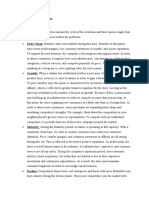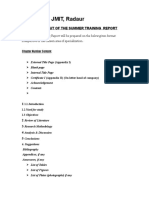100% found this document useful (1 vote)
308 views18 pagesRetail Organization & Evolution
This document discusses different theories of structural change in retailing and ways that retailers can be classified. It outlines the wheel of retailing theory, dialectic process theory, and natural selection theory to explain how retailing evolves over time. Retailers can be classified based on ownership, operational structure, merchandise, service offered, pricing, location, and customer interaction methods. Examples are provided of different types of retailers like department stores, discount stores, specialty stores, and hypermarkets. The document also discusses non-store retailing methods like catalogues, direct selling, television shopping, and vending machines.
Uploaded by
vikramjeet SinghCopyright
© © All Rights Reserved
We take content rights seriously. If you suspect this is your content, claim it here.
Available Formats
Download as PPT, PDF, TXT or read online on Scribd
100% found this document useful (1 vote)
308 views18 pagesRetail Organization & Evolution
This document discusses different theories of structural change in retailing and ways that retailers can be classified. It outlines the wheel of retailing theory, dialectic process theory, and natural selection theory to explain how retailing evolves over time. Retailers can be classified based on ownership, operational structure, merchandise, service offered, pricing, location, and customer interaction methods. Examples are provided of different types of retailers like department stores, discount stores, specialty stores, and hypermarkets. The document also discusses non-store retailing methods like catalogues, direct selling, television shopping, and vending machines.
Uploaded by
vikramjeet SinghCopyright
© © All Rights Reserved
We take content rights seriously. If you suspect this is your content, claim it here.
Available Formats
Download as PPT, PDF, TXT or read online on Scribd
/ 18





































































































